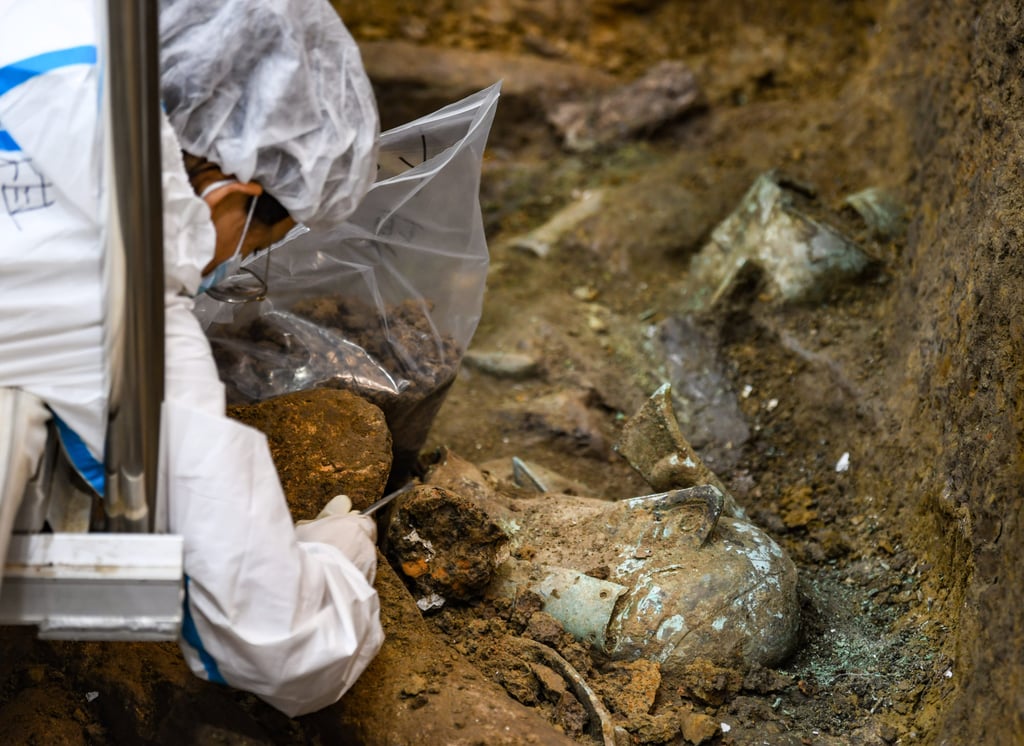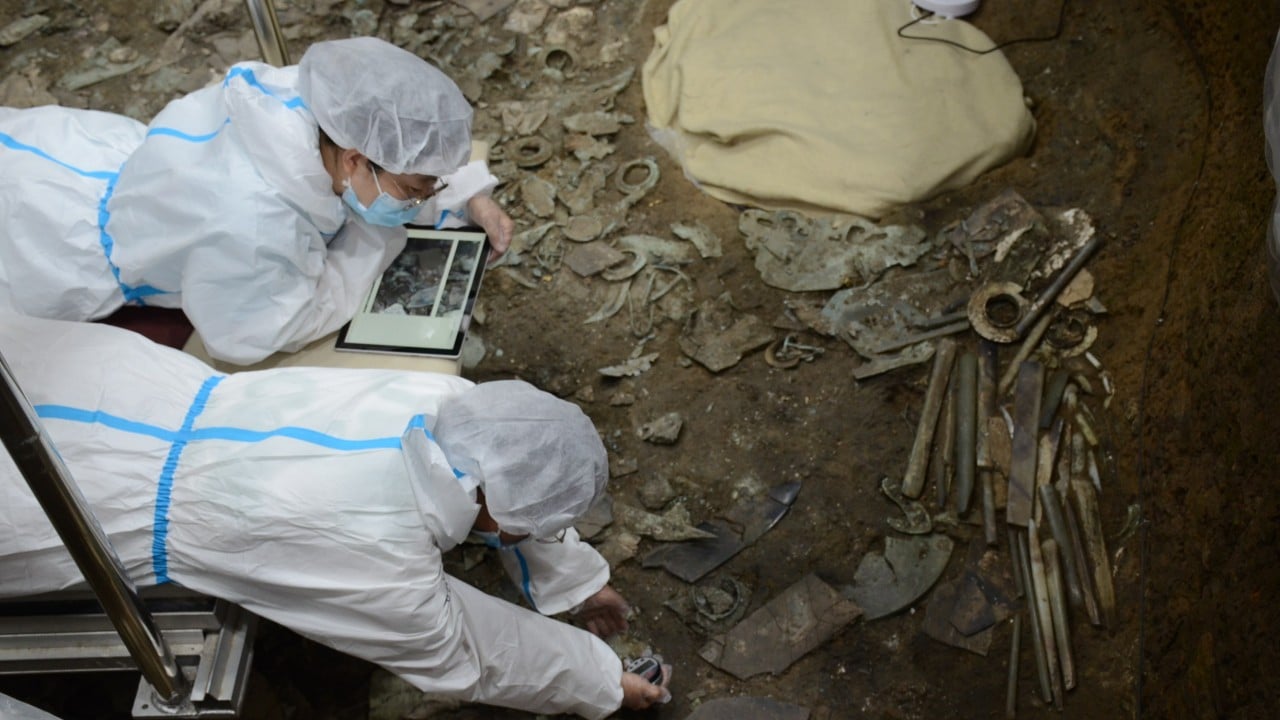Recent archaeological research on the ruins of Sanxingdui in southwestern China suggests an internal conflict spurred a population exodus and destruction of parts of the ancient city.
Advertisement
Located in Deyang, Sichuan province, the site encompasses three major cultural phases with each bearing distinct differences, Sun Hua, a professor at Peking University’s school of archaeology and museology, told a forum that opened in Sichuan on Saturday.
Sun, who also serves as the academic director of the Sanxingdui Research Institute, said in a speech that during the later period a war for control of the capital likely took place, according to the online news portal Thecover.cn.
During this conflict, parts of the city walls were destroyed, the urban water system was altered, and religious and ritual sites disappeared, he was quoted as saying.
Sanxingdui is one of the most important archaeological discoveries of the 20th century. It is considered a cornerstone of early Chinese civilisation and stands at the heart of the mysterious Shu kingdom, dating back about 4,500 years.

Since the mid-1980s, archaeologists have discovered eight burial pits that contain a treasure trove of bronze, gold, jade and ivory objects, all related to sacrificial activities.

